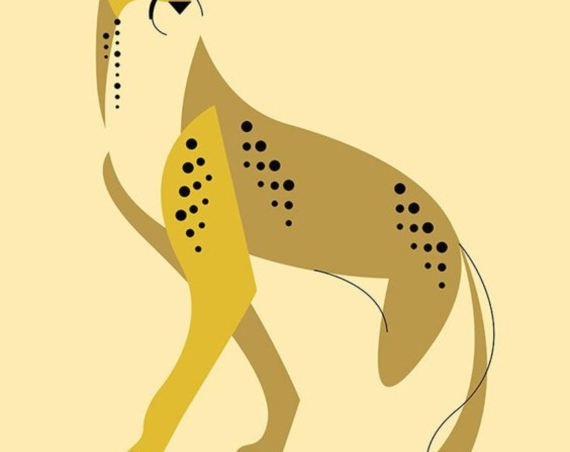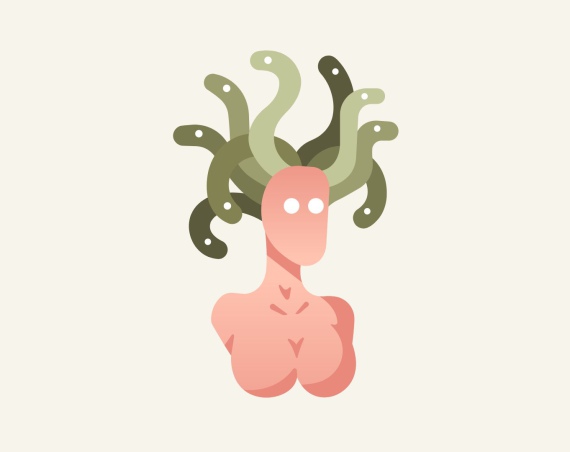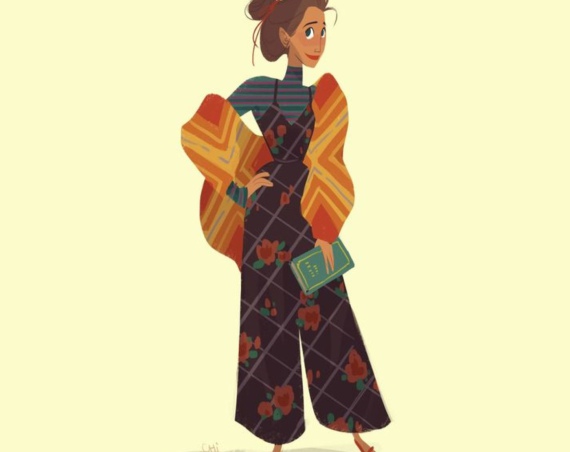In a world of words, pens are mightier than swords, and literary movements are the guiding stars. Join us as we embark on a witty and whimsical journey through the intricate landscape of literary movements, where ink spills tell tales, and words wield power.
Table of Contents
Definition of Literary Movements
Literary movements, in essence, are the kaleidoscope of human expression. They are the trends and ideologies that shape the narratives we tell. Think of them as the ever-shifting moods of literature – from the wild optimism of Romanticism to the stark realism of, well, Realism. Each movement has its own unique flavor, and together, they form a rich tapestry of literary history.
Understanding these movements means decoding the DNA of storytelling. It’s about recognizing the brushstrokes of a particular era or the rhythm of societal change. It’s a bit like entering a time machine and traveling through the pages of history.
Importance of Understanding Literary Movements
Now, you might wonder, “Why should I care about these literary trend shifts?” The answer is simple: these movements are the heartbeat of human culture. They’re the vessels through which societies express their collective joys, fears, and aspirations. By understanding these movements, you’ll gain profound insights into the minds of past generations and an appreciation for the threads that connect us to them.
Moreover, knowing your literary movements can enrich your reading experience. It’s like having a backstage pass to the author’s mind. When you dive into a book, you’ll be able to spot the influences, the rebellions, and the subtle nods to literary history. So, hop aboard our literary DeLorean, and let’s travel through time.
The Evolution of Literary Movements
The Early Roots of Literary Movements
Our journey into the world of literary movements begins with the ancients, who laid the very foundation of storytelling. The Greeks, with their epic heroes and tragic fates, were the OG literary rockstars. Think of Homer’s “The Iliad” and “The Odyssey” – they are the equivalent of today’s blockbuster movies.
But the classical era didn’t stop at the Mediterranean. Roman writers like Virgil, with his “Aeneid,” picked up the torch, crafting epic tales that still echo in our literary consciousness today. These tales of gods and mortals, love and betrayal, laid the groundwork for the storytelling techniques we still employ.
Ancient and Classical Literature: Picture the amphitheaters of ancient Greece, the mesmerizing masks of tragedy, and the grandeur of the Roman Forum. These settings and stories continue to influence modern storytelling, like ancient echoes in a vast cave.
The Renaissance and the Birth of Modern Literature
Fast forward to the Renaissance, an era of immense creativity and rebirth. This was the time of Shakespeare, the rockstar of English literature. His plays, like “Romeo and Juliet” and “Hamlet,” are the pop songs of the literary world. With dazzling wordplay and timeless themes, Shakespeare revolutionized the stage and brought the art of storytelling to the masses.
The Renaissance wasn’t just about Shakespeare; it was a blossoming of talent across Europe. Think of Cervantes’ “Don Quixote,” which gave birth to the modern novel, or Dante’s “Divine Comedy,” an epic journey through heaven, hell, and everything in between.
This period was a renaissance in every sense, sparking a wave of creativity that still influences the way we tell stories today.
Key Historical Milestones Shaping Literary Movements
The birth of modernity brought along some key historical milestones that greatly influenced the literary scene. The most game-changing of them all was the invention of the printing press by Johannes Gutenberg in the 15th century. It was like the internet of its time, spreading knowledge and ideas at a revolutionary pace. Suddenly, books weren’t just for the elite; they became accessible to the masses, opening the door to a literary revolution.
Then came the Enlightenment, an age of reason, philosophy, and intellectual exploration. Think of it as the birth of critical thinking, and it was the petri dish for many of the ideas that would later become literary movements. Philosophers like Voltaire and Rousseau were shaking things up, and their ideas were making their way into the world of literature.
The Industrial Revolution, with its smoke-belching factories and rapidly changing world, provided the backdrop for several literary movements. It was an age of both wonder and despair, and authors like Dickens, with his “Oliver Twist” and “A Tale of Two Cities,” captured the contrasts of this era.
Major Literary Movements Throughout History
Now, let’s delve deeper into the juiciest bits of our literary timeline – the major movements that have shaped the course of literature.
1. Romanticism
Characteristics: Romanticism was like a literary love affair with the natural world, emotions, and individualism. It was all about exploring the mysteries of the human soul, embracing the sublime, and getting all gooey-eyed over nature.
Prominent Authors and Works: The Romantics were the original emo poets and artists. Wordsworth and his lyrical ballads, Coleridge’s “Rime of the Ancient Mariner,” and of course, Mary Shelley’s “Frankenstein,” the OG science fiction novel that still keeps us up at night.
Historical Context: Romanticism emerged in the late 18th century, and it was all about rebelling against the industrialized, rationalistic world. Romantics were the OG rebels, running through fields of daisies and dreaming of a world unbound by rules.
2. Realism
Characteristics: If Romanticism was all about heart and soul, Realism was its stern counterpart, showing life as it really was. It was like the literary version of a documentary, highlighting the everyday struggles and the mundane reality of human existence.
Prominent Authors and Works: Tolstoy’s “War and Peace,” a saga of Russian society, and Flaubert’s “Madame Bovary,” a critical look at provincial life, are quintessential examples of Realism.
Historical Context: Realism became prominent in the 19th century, when writers decided it was time to take off the rose-colored glasses and see life for what it truly was.
3. Modernism
Characteristics: Modernism was like literature on an acid trip. It embraced abstraction, fragmented narratives, and was often a journey through the inner workings of the human mind. It was the response to a world shaken by the horrors of World War I and the advent of the modern age.
Prominent Authors and Works: T.S. Eliot’s “The Waste Land” is a labyrinthine journey through a post-war wasteland, while Virginia Woolf’s “To the Lighthouse” is a literary impressionist masterpiece.
Historical Context: Modernism emerged in the wake of World War I, a time when society was grappling with the shock and trauma of a devastating war. Modernists sought new ways to make sense of a changing world.
4. Postmodernism
Characteristics: Postmodernism was like literature pulling a prank on itself. It’s playful, self-aware, and often breaks the fourth wall. Think of it as literature saying, “I see what you did there.”
Prominent Authors and Works: Postmodern legends like Thomas Pynchon, with his cryptic “Gravity’s Rainbow,” and Kurt Vonnegut, whose “Slaughterhouse-Five” blends science fiction with a meta-narrative about war.
Historical Context: Postmodernism started to gain momentum in the mid-20th century, reflecting the increasing complexity and chaos of the world. It delighted in dismantling traditional narratives and reveling in the absurdity of life.
5. Surrealism
Characteristics: Surrealism is like a dream on paper. It takes reality, gives it a twist, and serves it back in a dreamlike, illogical, and fantastical manner.
Prominent Authors and Works: Salvador Dali and André Breton were the puppet masters of Surrealism. Dali’s art, like “The Persistence of Memory,” is a visual manifestation of surrealism, while Breton’s “Nadja” is a literary exploration of the unconscious.
Historical Context: Surrealism found its groove in the 1920s, a time when artists were tired of making sense and wanted to embrace the absurd. It was like a wild artistic energy bursting onto the scene.
6. Impressionism
Characteristics: Impressionism is like a painter’s brush lightly touching the canvas. It’s all about capturing the moment, the fleeting emotions, and the atmosphere of a scene in a way that’s almost poetic.
Prominent Authors and Works: Henry James was the poster child of Impressionism, with his masterpieces like “The Portrait of a Lady.” His writing is like a snapshot of life, capturing a moment in time.
Historical Context: Impressionism thrived during the late 19th and early 20th centuries, mirroring the changing landscapes of a rapidly industrializing world. It was a bit like trying to capture the essence of a world in motion.
7. Magical Realism
Characteristics: Magical Realism is the ultimate blend of dreams and reality. It takes the supernatural and makes it feel as common as your morning coffee. Think of it as the “Alice in Wonderland” of literature.
Prominent Authors and Works: Gabriel García Márquez’s “One Hundred Years of Solitude” and Isabel Allende’s “The House of the Spirits” are like literary alchemists. They turn the ordinary into the extraordinary.
Historical Context: Magical Realism found its roots in Latin America in the mid-20th century. It was a way to bring enchantment into everyday life, to make the ordinary feel magical.
8. Expressionism
Characteristics: Expressionism is like a scream on paper. It’s an outpouring of emotion, a reaction to the anxieties and horrors of the world. It’s like art as therapy.
Prominent Authors and Works: German playwrights like Bertolt Brecht and Franz Kafka, whose works like “The Metamorphosis” are an exploration of alienation and despair.
Historical Context: Expressionism was born amidst the turmoil of World War I. It was a reflection of the anxiety and despair that gripped society during this time. Expressionists didn’t just tell stories; they poured their souls onto the page.
9. Classicism
Characteristics: Classicism is like a well-structured dinner party. It values tradition, order, and restraint. Think of it as literature wearing a tailored suit.
Prominent Authors and Works: Molière’s comedies, where wit and satire were the order of the day, and the timeless works of Jane Austen, like “Pride and Prejudice.”
Historical Context: Classicism reached its zenith in the 17th and 18th centuries, amidst the elegance of powdered wigs and fancy court attire. It was like a symphony of order and harmony.
10. Neoclassicism
Characteristics: Neoclassicism is like the rebirth of the classics, with a modern twist. It’s a return to the glory of ancient Greece and Rome, but with a touch of modernity.
Prominent Authors and Works: Alexander Pope was a master of Neoclassical satire. His “The Rape of the Lock” is a witty takedown of the frivolous society of his time.
Historical Context: Neoclassicism emerged in the 18th century, in an age of rationalism and Enlightenment ideals. It was like taking the wisdom of the ancients and making it relevant to the present.
Impact of Literary Movements on Society and Culture
Literary Movements as Reflections of Societal Changes
Literary movements are more than just stylistic shifts; they are the barometers of societal change. They reveal the collective consciousness of their time. When you read a piece of Romantic literature, you’re not just enjoying a good story; you’re stepping into the shoes of an era that yearned for nature, emotion, and individualism. Realism, on the other hand, holds a mirror to the challenges and everyday struggles of a society in transition.
Influence on Art, Music, and Film
But the influence of literary movements doesn’t stop at the written word. They ripple through the entire creative spectrum. Impressionism in art, for instance, was a response to the Impressionist literary style – both aimed to capture fleeting moments and evoke emotions. The sync between literature and other art forms is like a harmonious symphony, each echoing and influencing the other.
And who can forget the influence on film? Surrealism’s dreamlike qualities can be seen in films like David Lynch’s “Mulholland Drive” or Christopher Nolan’s “Inception.” Modernism’s fragmented narratives and introspective explorations have found their way into the most intricate of cinematic experiences.
Shaping of Political and Philosophical Ideals
Literary movements aren’t just about aesthetics; they’ve played a pivotal role in shaping political and philosophical thought. Think about the Enlightenment – it was an era fueled by reason and intellectual exploration, and it set the stage for democratic revolutions. Rousseau’s ideas about the social contract influenced political theorists, and his thoughts reverberate in modern democracies.
Literature often carries the seeds of social change. It’s where ideas about equality, freedom, and justice find their voice. The feminist movement, for example, owes much to the literature of the 19th and 20th centuries, with works like Virginia Woolf’s “A Room of One’s Own” and Simone de Beauvoir’s “The Second Sex” paving the way for gender equality discussions.
Contemporary Literary Movements
Now that we’ve traveled through history, let’s step into the present and explore some of the intriguing literary movements of today.
1. Postcolonial Literature
Characteristics: Postcolonial literature is a way to hear the voices of the silenced, to see the world through the eyes of the colonized. It’s a form of literary resistance and reclamation.
Prominent Authors and Works: Arundhati Roy’s “The God of Small Things” and Chinua Achebe’s “Things Fall Apart” are modern classics in this genre. They challenge the colonial narratives and offer a fresh perspective.
Relevance in the 21st Century: In an age of globalization, postcolonial literature continues to explore issues of identity, power, and postcolonial legacies. It’s a reminder that the echoes of colonialism still reverberate in the modern world.
2. Ecofiction
Characteristics: Ecofiction is literature that’s deeply concerned with our relationship with the environment. It’s like a call to arms, a reminder that the Earth is not an endless resource but a precious home.
Prominent Authors and Works: Barbara Kingsolver’s “Flight Behavior” and Margaret Atwood’s “Oryx and Crake” are like wake-up calls for our planet. They tell stories of environmental destruction, species extinction, and the impact of climate change.
Addressing Environmental Concerns: In an age of climate change and ecological crises, ecofiction reminds us to be stewards of our planet, not its exploiters. It’s a literary protest against the reckless destruction of the environment.
3. Cyberpunk
Characteristics: Cyberpunk is like literature on the edge of a digital abyss. It explores the dark side of technology, the dystopian future where artificial intelligence reigns, and corporations hold the reins of power.
Prominent Authors and Works: William Gibson’s “Neuromancer” and Philip K. Dick’s “Do Androids Dream of Electric Sheep?” are like neon-lit warnings of a tech-dominated future.
Technology and the Dystopian Future: In an age of AI and digital domination, cyberpunk offers cautionary tales and explores the dark side of technology. It’s the “Black Mirror” of literature, revealing the eerie reflection of our tech-savvy world.
The Ongoing Discussion
How Literary Movements Continue to Evolve
Literary movements aren’t relics of the past; they’re living organisms, evolving to meet the demands of contemporary society. There’s an ongoing debate about what defines a new movement and how it relates to the digital age. The explosion of self-publishing, online platforms, and social media has transformed the way we write, read, and engage with literature.
Diversity and inclusivity are also hot topics in the literary world. Movements like Afrofuturism, Indigenous literature, and LGBTQ+ representation are challenging traditional narratives and offering fresh perspectives. They are pushing the boundaries of storytelling and making literature more reflective of the rich tapestry of human experiences.
Conclusion
The Enduring Significance of Literary Movements
And here we are at the end of our literary whirlwind tour. What we’ve seen is that literary movements aren’t just historical curiosities; they are the living pulse of human culture. They have the power to make us laugh, cry, reflect, and even rebel. They are the storytellers of our past, the navigators of our present, and the guides to our future.
Encouragement for Further Exploration
Don’t let your literary journey end here. Dive into the pages, explore the eras, and immerse yourself in the world of literary movements. It’s like having a backstage pass to the grand theater of human imagination. By understanding the rich tapestry of literary history, you’ll unlock new dimensions of storytelling, explore the depths of human experience, and embark on adventures through time and space.
Final Thoughts
Literary movements are the beating heart of human expression. They are the threads that weave the fabric of our culture and the mirrors that reflect our hopes and fears. So, dear reader, let your literary journey be an adventure, for in the world of words, there is always a new chapter to explore, a new movement to discover, and a new story to tell.
Additional Resources
List of Books for Further Reading
- For the Romantics: “Frankenstein” by Mary Shelley, “Wuthering Heights” by Emily Brontë, “The Rime of the Ancient Mariner” by Samuel Taylor Coleridge.
- Exploring Realism: “Madame Bovary” by Gustave Flaubert, “War and Peace” by Leo Tolstoy, “Middlemarch” by George Eliot.
- A Dip into Modernism: “Ulysses” by James Joyce, “The Great Gatsby” by F. Scott Fitzgerald, “To the Lighthouse” by Virginia Woolf.
- Postmodernism Playfulness: “Gravity’s Rainbow” by Thomas Pynchon, “The Crying of Lot 49” by Thomas Pynchon, “Slaughterhouse-Five” by Kurt Vonnegut.
- Surrealism’s Dreams: “The Persistence of Memory” by Salvador Dali, “The Surrealist Manifesto” by André Breton, “Nadja” by André Breton.




